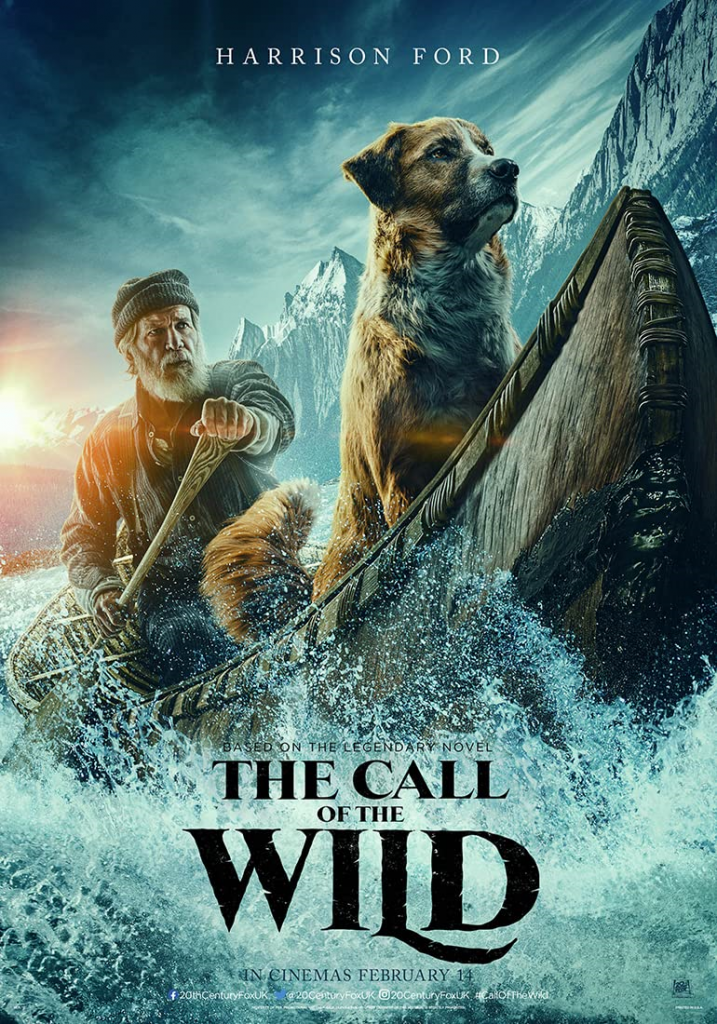
The Call of the Wild is a 2020 American adventure film directed by Chris Sanders and adapted from Jack London’s 1903 novel of the same name and tells the story of a domestic dog finding his inner wild wolf. Set during the late 19th century in Canada’s Yukon centralizing the Klondike Gold Rush, the film follows the story and development of Buck a crossbreed between a St. Bernard and a Scotch Collie finding his inner wolf and following the ‘call of the wild’. Throughout the film Buck encounters different masters and bad and good sides of humanity. His character is initially presented as spoiled and carefree being the dog of a rich and reputable master in warm California. His domestic and peaceful life changes abruptly when he is stolen from his home and shipped to cold Yukon. For the first time, he is being treated with violence and is subject to human greed and superiority. His next journey begins as he is being sold to Perrault for his dog sled to deliver mail across Yukon. As part of a pack, Buck discovers new sides of him showing his ambition and kind-heartedness. He undergoes a salient transformation from a scared follower to a brave and confident pack leader.
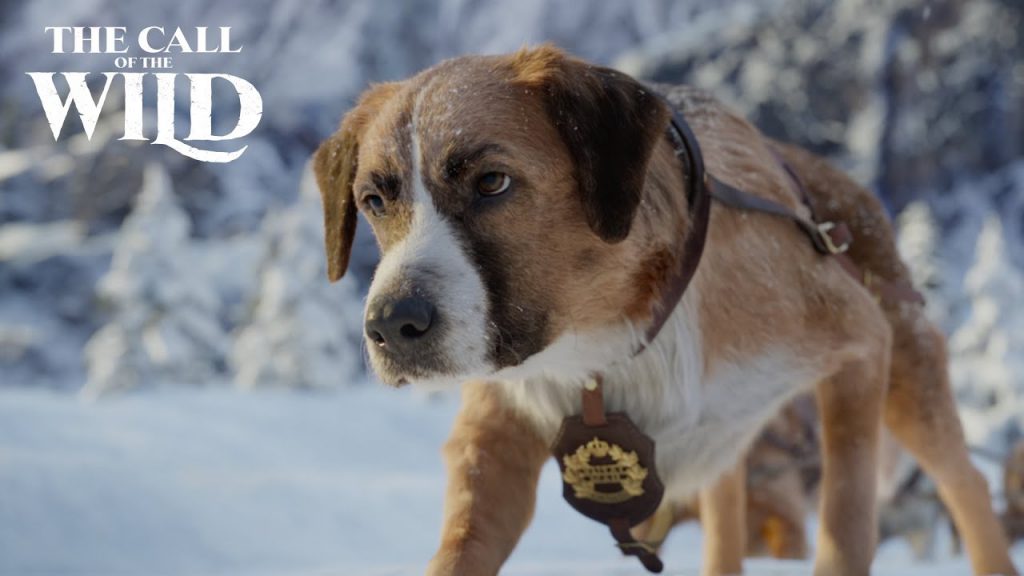
He begins to see visions of an intimidating black wolf guiding and helping him to express his inner wolf. Eventually accompanied by his last owner John Thornton, Buck experiences an adventure which leads to him finding his true home in the wild and mating with a timber wolf. Being the leader of a wolf pack, he finally finds his inner wolf and answers the call of the wild.
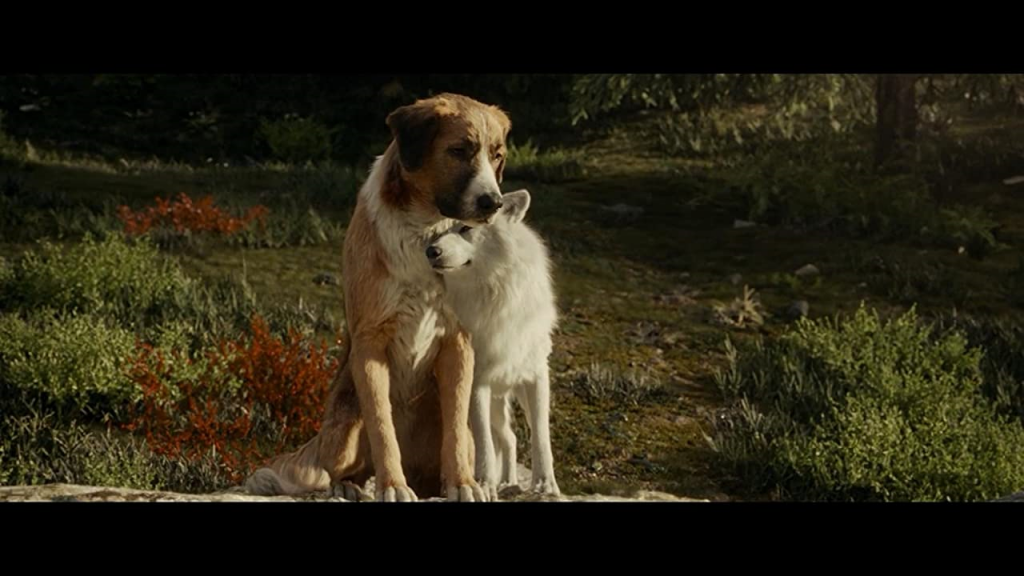
The genre being adventure film, The Call of the Wild encompasses the most important and characteristic feature of this genre: elements of travel and journey [1]. The film centers around Buck´s journey which contributes to his powerful development. As Buck was uprooted from his place of comfort, he is forced to travel where he finds himself following a meaningful journey which is stamped with danger and excitement making the film conform with the genre´s requirements. Moreover, in adventure films setting plays a salient role [2]. Here, the importance of setting is emphasized as the strong contrast of Buck’s initial home being warm California changes to cold and snowy Alaskan Yukon. This change in setting catalyzes and reflects Buck’s interior transformation from a spoiled domestic dog to a leader of a wolf pack. Furthermore, adventure films transfer an urge of freedom to its viewers due to the focus on exciting adventures. Classic adventure films are Indiana Jones and Star Wars both starring Harrison Ford who also happens to play John Thornton in The Call of the Wild [2].
However, the centre of attention is not Harrison Ford but a dog created through computer-generated imagery (CGI). The use of CGI was viewed critically by the viewers as it said to be ‘unnecessary and distracting’ [3] making the film appear more unrealistic. Nevertheless, CGI enabled the producers to have more freedom and control over the animal by adding facial expressions and movements which emphasize the transmission of feelings. Moreover, by using an animal as the centre of the film a perspective showing humans from a more distant point of view was created. Through this distance and presented human-animal relationships a more critical approach was enhanced sensitizing the viewers to self-criticism. The human-animal relationship in the film can also be considered as a critique of the need of humans to control dogs. The effects of CGI and portrayal of humans in respect to their relationship with Buck will be analyzed in the following.
Throughout the film, the use of CGI is irrefutably visible. While some might consider this as the film’s weak spot others might admire how it enables the viewers to look into the animal’s thoughts and feelings. The scene in which Buck is attacked by the former pack leader Spitz to assert his dominance illustrates the powerful effects of CGI adding facial expressions and adjusting the dogs’ posture to intensify the scene’s effect. The cinematography also points to a rather anthropomorphized representation of the dogs since close-ups of Buck’s and Spitz’s faces are shown. Their faces exaggeratedly transfer different emotions like anger and resignation, making every emotion instantly understandable. The use of slow-motion as Buck pins Spitz down also transmits a rather unrealistic and comic-like visualization. However, through the lack of speech the CGI of the dogs enable the viewers to understand their actions.
Buck as the main character enhances a critical perspective of humans and through his change of masters a wide range of human characteristics and human-animal relationships are addressed. As the movie is set during the Klondike Gold Rush, human greed is strongly apparent. Through Buck’s different masters, different sides of humans are being presented. Starting with a rich master the higher class of California is shown. Perrault, the dog sled owner, is rather modest and appreciates the non-materialistic things in life like making other people happy. Being then bought by Hal, a mean gold prospector, Buck encounters the selfish and relentless side of humanity. Finally, Buck ends up with John, played by Harrison Ford, who does not treat Buck as a pet but rather as a companion. John lived through a tragic loss and looks for his place in the world. His relationship with Buck is based on mutual respect and justness and he does not see himself as his owner or master. Rather, he appreciates him as a friend and even listens to Buck’s demand to stop drinking alcohol. Both characters are the alphas in the relationship and are looking for their places in the world.
The fact that Buck eventually finds his home and happiness among wolfs far away from humans and civilizations points to the critique of human influences. Throughout the film, Buck’s masters want to control him and when following his instincts Buck is being punished. The point that Buck finds happiness after following the call of the wild and being his own master further touches upon how domestic pets are being controlled and limited by humans whereas wolfs as wild animals can live out their instincts. However, it is also notable that Buck’s different masters have shaped his character. The violence of Hal makes him stronger and Perrault’s passion and belief in him helpes him to become a leader.
Buck’s instincts are being visualized through his visions of an intimidating black wolf pointing Buck in the right directions. The visions start as Buck must sleep outside in the snow for the first time. Therefore, his distance to his former life as a domestic dog catalysis the ‘Call of the Wild’ which also leads to his visions of the wolf. The visions stop as Buck finally reaches his destination in the wild among real wolfs. Thus, his visions have guided him towards the call of the wild. This shows that by following his own voice instead of obeying his masters Buck finds his true purpose. The appearance of the ‘ghost wolf’ is intimidating due to his black color, angst-inducing seize and fiery eyes fully contrasting Buck’s appearance. This contrast illustrates the differences of a domestic dog influenced by humans and a wild wolf; the interior transformation of Buck.
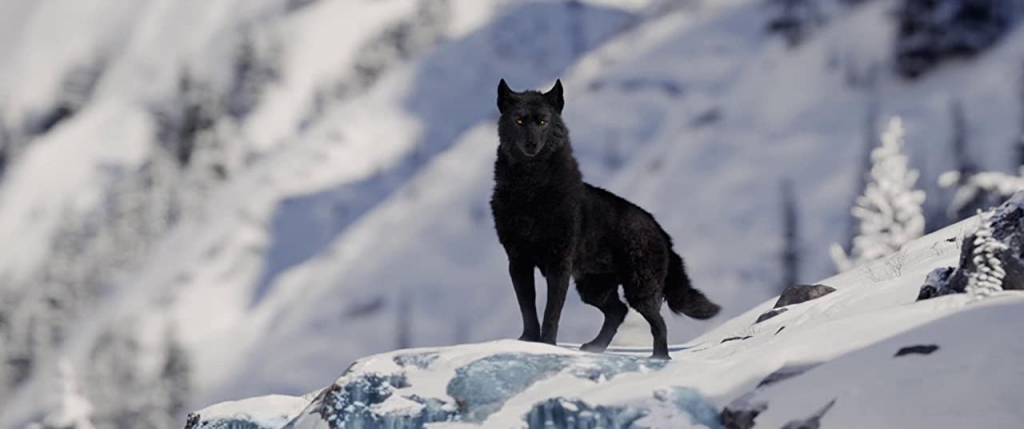
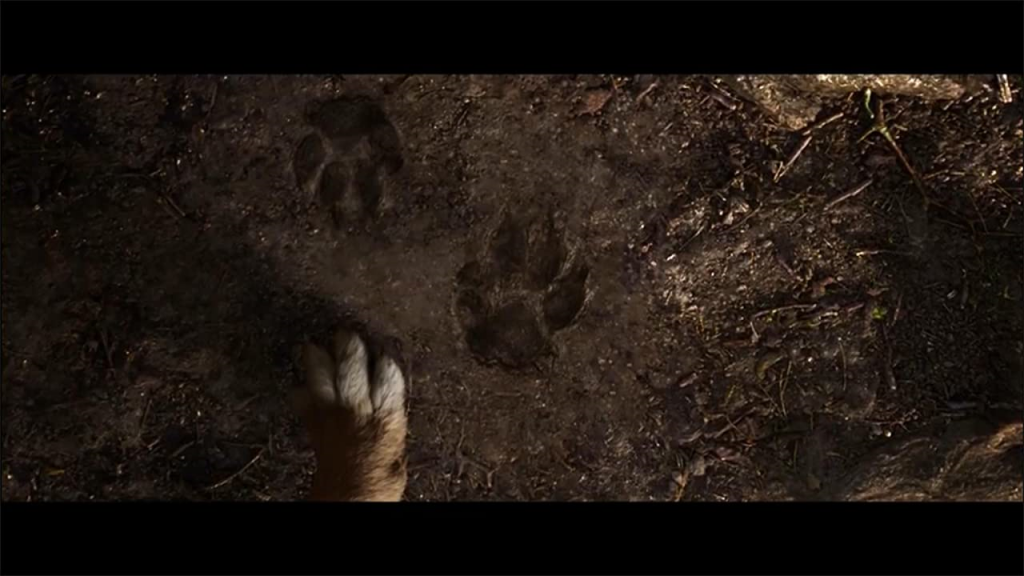
Buck’s interior transformation climaxes as he follows the white wolf into the woods for the first time. This scene shows what happens when a domestic dog meets a wolf. Buck does not know how to approach the wolf and ends up expressing his ‘dogness’ by reaching out his paw. The wolf reacts aggressively as this behavior does not match with that of a wolf and eventually runs away. Buck is left confused which is expressed through his eyes and head lowering. He looks down and sees the imprint of the wolf’s paw which matches the shape of his. The camera zooms into his eyes widening due to the sudden realization that he and the wolf are connected. In the background resounds a wolf howl symbolizing the call of the wild. In that moment Buck seems to internalize his visions as he finds his inner wolf.
The film addresses many meaningful key points. Having a dog as the main character does not seem to hinder drawing important lessons from the film which are applicable to humans and society. The perspective of Buck even perhaps enables a more critical lens through which the human characters can be viewed. The human-animal relationships show the diversity of masters and how dogs act and develop differently depending on their owner’s personality and actions. Furthermore, the lack of communication between the animals does not pose an obstacle. Rather, through intense animation every emotion of the animals can instantly be understood. Also, imagery and metaphors like the ghost wolf representing Buck’s inner wolf enhance the film’s understanding and persuasion. The CGI is critically viewed by the audience as it is obvious that Buck is not a real dog. Therefore, the animals in the film do not emotionally affect the audience as much as it would if real dogs were included. Films like Marley & Me including real dogs may have a stronger emotional influence but these dogs, as their trainer explains, ‘…get to be dogs. They don´t have to be animals acting as humans.’ [4]. Buck in The Call of the Wild, as typical for the genre, undergoes a dangerous harrowing adventure and having a real dog playing this role appears almost unrealistic. Eventually, it is debatable whether realistic technology will ever be able to fully replace real animals in films.
References:
[1] Filmsite, ‘Adventure Films’, <https://www.filmsite.org/adventurefilms.html> [Accessed 15/01/2021]
[2] Hellerman Jason, (2019), ‘Explore The Adventure Genre in Film and TV’, No Film School, <https://nofilmschool.com/adventure-genre-in-film-and-tv> [Accessed 15/01/2021]
[3] Rotten Tomatoes, (2020), <https://www.rottentomatoes.com/m/the_call_of_the_wild_2020> [Accessed 19/01/2021]
[4] Wedin Marni, ‘Marley & Me’, Modern Dog Magazine, <https://moderndogmagazine.com/articles/marley-me/544> [Accessed 19/01/2021]
Further Reading: